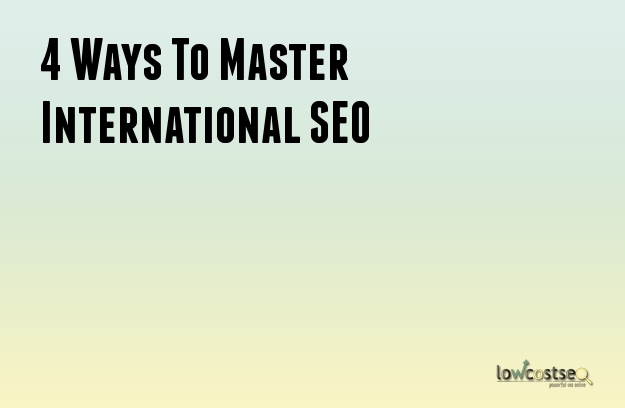
For many companies and websites out there, there are usually a number of countries that you may be targeting. When it comes to fantastic SEO services, paying attention to these goals is important.
After all, if you can ensure you’re reaching the right locations, your SEO efforts become all the more powerful. To help show how this can be achieved, here are 4 of the best ways to master international SEO!
Be Relevant To That Country
Different countries have different values, so make sure any SEO efforts are targeting the right people. Some common examples of country-specific differences could include:
- Cultural values. If you’re appealing to the wrong cultural values, your target audience isn’t going to respond the way you have anticipated.
- Language and spelling. This one is vital. Use an advanced SEO service, such as Ahrefs, to refine keyword planning by country specific searches. British people search for “trousers” while Americans will search for “pants”.
- Is it an offer or service that is available to that country? If your website differs between countries, your SEO efforts should represent this. Sure, you might get the links in place, but if people click through only to find a lacklustre website that doesn’t meet the initial expectations you set-up, this isn’t going to offer a high rate of converting visitors into customers.
In short: don’t be ignorant. Understand the countries you are targeting and have a general idea of the people you are seeking. This is one of the reasons why it might be better to operate two smaller campaigns, so that each can focus on their own respective audience, rather than trying to find medium ground that overlaps the two.
Domain Names
Similarly, do you have the right domain name? Depending on your business, you might need to consider this. For example, if you have a company that provides local services in both the United Kingdom and, let’s say, Germany, a .com URL may seem appealing.
Yet, under the surface, this might also hinder you. What is people are put-off by the international domain? This doesn’t suggest a ‘local’ service. One possible solution here is to set-up other domains in .de and .co.uk, even if they only serve to redirect to the main website (at the very least, they can direct to country-specific landing pages).
Social Media
Social media is always a great tool for marketing, as well as SEO, so why not use it here? Most platforms have a way to filter how your messages are sent out. Facebook, for instance, lets you filter your audience by a range of factors, most notably the country of residence and language spoken.
Furthermore, why not have a different social media profile for each country? If you’re a big business, this should be a necessity. After all, people are less likely to follow you if your content switches between different regions. A profile that is 100% dedicated to their country, on the other hand, has a much bigger appeal – a good reason to follow and share content.
Multilingual Tagging
One of the major issues with SEO campaigns on an international scale is dealing with more than one language. After all, do you need to duplicate all content for different languages? If you’re going to be sharing this content on the relevant platforms, this is one way to do something.
Likewise, you need to ensure that Google can determine that you are targeting different languages. This is especially true when you have one domain – you don’t want Google sending your French readers content in Spanish. If you’re just targeting one language, this can still ensure you only reach the intended audience.
Hreflang attributes can help separate these, to better understand Google’s understanding. This isn’t about improving your position on the SERPs – it’s about ensuring the right pages go to the right searches to begin with.
In closing, great international SEO efforts can be achieved, with a little common sense. There are some great methods and tools online to take advantage of, as well as some great SEO agencies that know how to target localised searches!
